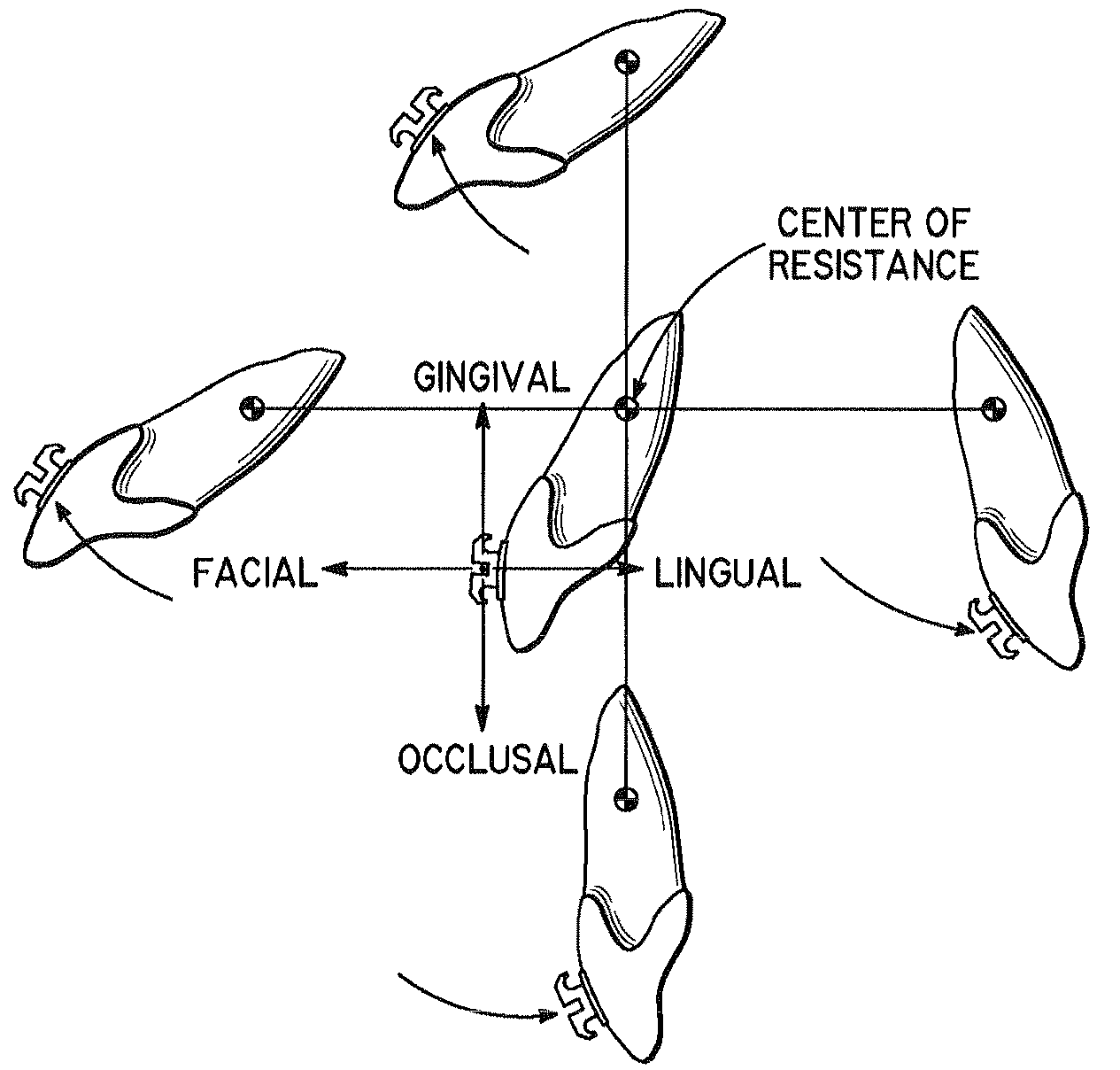Torque Overcorrection Model
a technology of overcorrection and model, applied in the field of computer-aided orthodontia, can solve the problems of difficult to create a pure translational movement of a tooth, difficult to control, and inconvenient to implemen
- Summary
- Abstract
- Description
- Claims
- Application Information
AI Technical Summary
Benefits of technology
Problems solved by technology
Method used
Image
Examples
Embodiment Construction
[0034]In accordance with the present invention, a computer aided orthodontia design system utilizes tooth shape data to approximate the actual translational and angular effects. This process is performed after appliance design and prior to final fabrication.
[0035]Referring now to FIG. 2, the tooth landmarks used in accordance with principles of the present invention may be identified:
[0036]MDL.pl (Mid Developmental Lobe Plane)
[0037]CC.pt (Cervical Center Point)
[0038]CL.ax (Crown Long Axis)
[0039]FEGJ.pt (facial Enamel Gingival Junction Point)
[0040]IE.pt (Incisal Edge Point): Found by projecting a line normal to MDL.pl through BC.pt
[0041]Crown Height (CH.li): The distance from IE.pt to FEGJ.pt. This is used to find CR.pt by using data from a lookup table proportionate to CH.li along CL.ax from CC.pt extending toward the root tip.
[0042]CR.pt (Center of Resistance Point): Found by extending CL.ax gingivally by an amount proportional to the length of the line segment CH.li (approximate c...
PUM
| Property | Measurement | Unit |
|---|---|---|
| Force | aaaaa | aaaaa |
| Angle | aaaaa | aaaaa |
| Torque | aaaaa | aaaaa |
Abstract
Description
Claims
Application Information
 Login to View More
Login to View More - R&D
- Intellectual Property
- Life Sciences
- Materials
- Tech Scout
- Unparalleled Data Quality
- Higher Quality Content
- 60% Fewer Hallucinations
Browse by: Latest US Patents, China's latest patents, Technical Efficacy Thesaurus, Application Domain, Technology Topic, Popular Technical Reports.
© 2025 PatSnap. All rights reserved.Legal|Privacy policy|Modern Slavery Act Transparency Statement|Sitemap|About US| Contact US: help@patsnap.com



